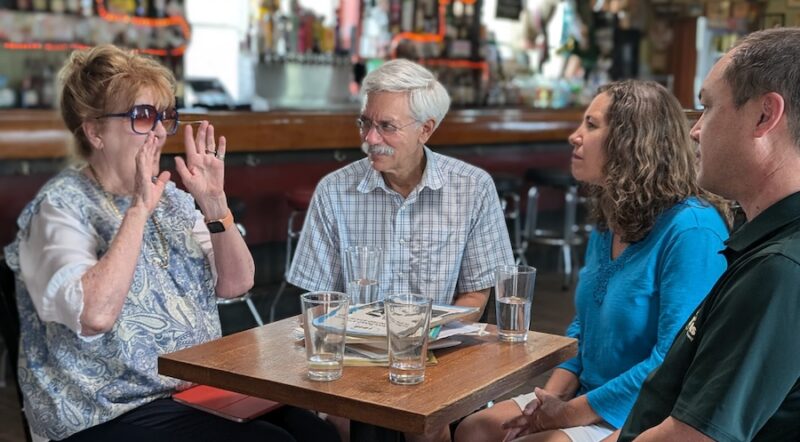10 More Game-Changing Rail-Trails
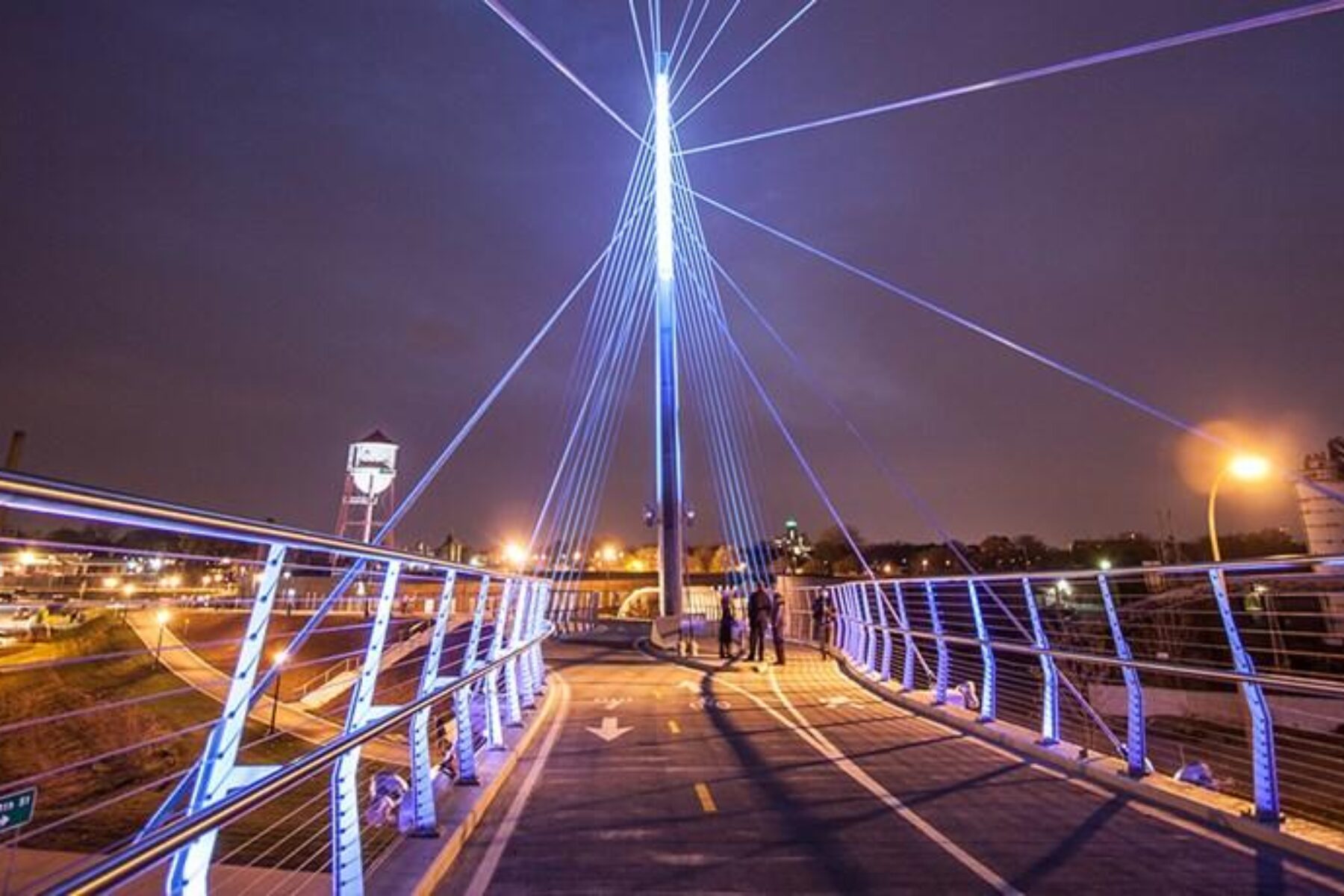
Earlier this year, we posted Ten Trails That Helped Build the Movement. But of course, with almost 2,000 completed rail-trails across the country, we just scratched the surface. In 1986, there were only 250 miles of rail-trails. Three decades later—thanks to a lot of passionate people—rail-trails have transformed America.
Here are 10 more game-changing rail-trails (in no particular order) that have had an impact, as destinations, recreation magnets, economic drivers or transportation connectors, in the U.S.
(Same disclaimer as last time. We know there are a lot more great rail-trails out there; consider this a partial list!)
1. Revolutionary – Minuteman Bikeway (Massachusetts)
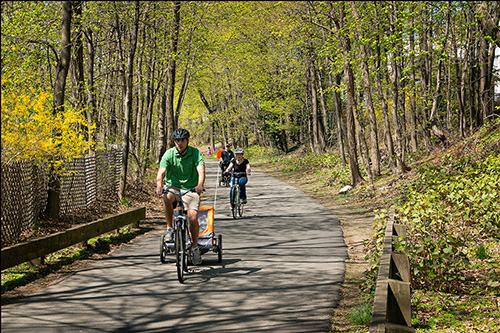
History abounds along this 10-mile route outside of Boston, which follows part of Paul Revere’s famous midnight ride of April 18, 1775 (you know—the one that alerted the colonies to the approach of the British military at the start of the Revolutionary War). But its revolutionary qualities don’t stop there. The trail connects a number of major communities, including Cambridge, Arlington, Lexington and Bedford (with further trail/transit connectors to Concord and Boston), making it incredibly convenient for commuting, recreation and physical activity—its impact on the health of residents has been noted by local leaders—and today, the trail welcomes several hundred thousand trail users annually.
2. Living History – Heritage Rail Trail County Park (Pennsylvania)
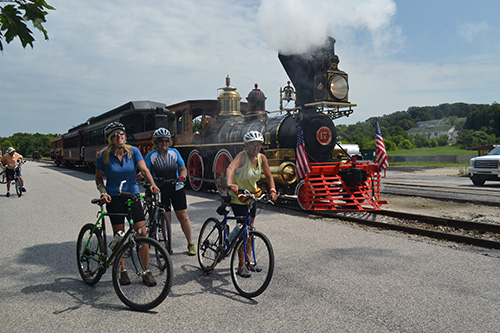
The 25-mile Heritage Rail Trail County Park in Pennsylvania follows the former route of the rail line that carried President Lincoln to deliver his now famous Gettysburg Address in November 1863, and that served as a portion of the way for his funeral train procession in 1865. Today, the iconic rail-with-trail celebrates and embraces its historic Civil War legacy with Steam Into History, a 10-mile excursion train ride for tourists, powered by a replica 1860s steam locomotive built from scratch, and accompanied by costumed tour guides and re-enactors. It’s an incredibly successful example of a tourist train + trail partnership in America. The trail also connects with the 19.5-mile Torrey C. Brown Rail Trail at the Mason-Dixon Line, creating a beautiful, continuous 44.5-mile route into northern Maryland.
3. Destination Trail – Cape Cod Rail-Trail (Massachusetts)
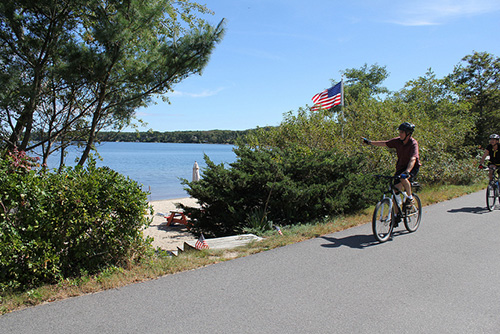
Speaking of tourism, the Cape Cod Rail Trail is a true leader in this respect, serving up lots of local culture along its 22-mile route, with quaint villages, beautiful landscapes, diverse wildlife and its star offering, Cape Cod National Seashore with 40 miles of beaches. Bike and inline skate rentals are available along the route, and the trail is monitored by police bike patrols. Used by hundreds of thousands of trail users annually—including horseback riders, it’s a full integration of destination tourism, outdoor recreation and active transportation (in an area known for its traffic jams).
4. Cross-State Connection – Katy Trail State Park (Missouri)
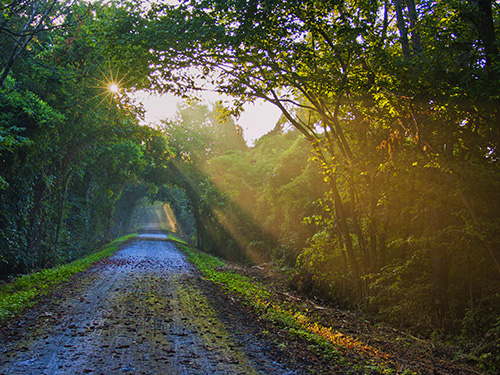
The Katy Trail is currently the longest continuous open rail-trail in America at approximately 238 miles, spanning (almost across the state) from Clinton to St. Louis. Plans are in the works to connect the trail to the in-progress Rock Island Trail system, which will run from Kansas City to Beaufort—and that means a 450-mile-plus continuous loop extending the entire width of Missouri. Just imagine the economic and transportation benefits. (Also, the Katy Trail’s former rail line was one of the first in the U.S. to be railbanked, an act that, since its creation by Congress in 1983, has made thousands of miles of rail-trails possible.)
5. Good Things Happen in Threes – Little Miami Scenic Trail (Ohio)
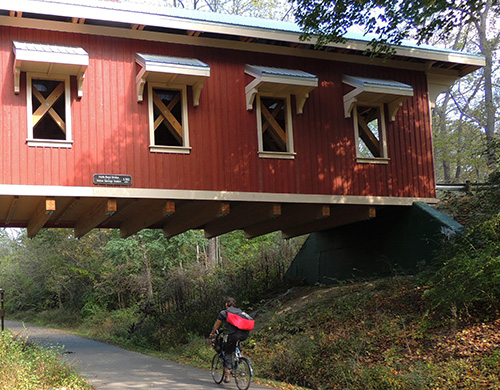
Here’s another cross-state connector, brought to you by the Buckeye State. The Little Miami Scenic Trail is anything but little, spanning 73 miles from Springfield and Newtown (near Cincinnati) and connecting dozens of towns and five counties. But the connections don’t stop there. It also connects with the Simon Kenton Trail in Springfield, creating a total of 105 miles of seamless trail. And, it’s a key anchor of two impressive larger trail systems: the southern leg of the Ohio to Erie Trail system, an in-progress 320-mile cross-state route from the Ohio River in Cincinnati to Lake Erie in Cleveland; and the 330-mile Miami Valley Bike Trails network, which is centered in Dayton and Xenia and is the largest paved trail network in America.
RELATED: 10 Rail-Trails That Helped Build the Movement
6. Galvanizing a Community – Richmond Greenway (California)
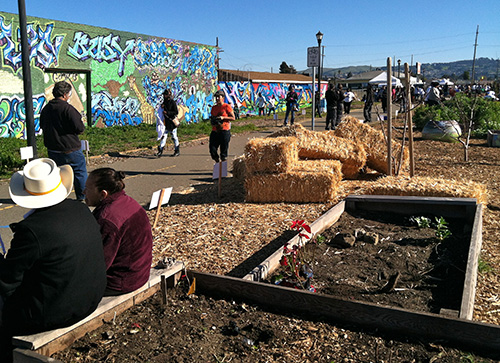
This 2-mile urban trail in the San Francisco Bay Area was once called “El Baldio” (the abandoned place) by locals—but has made a remarkable transformation in the past five years due a passionate community-driven effort by partners such as Friends of the Richmond Greenway, Pogo Park, Rich City Rides and RTC (which also played a pivotal role in the trail’s development). The development of new parks—using a resident-driven approach—as well as new art, greening projects, community gardens, youth and family bicycling programs and bicycle co-ops have taken the greenway from neglected corridor to vibrant gathering space. It’s a powerful example of how communities can come together to revitalize trails, and how trails can revitalize communities.
7. Urban Resurgence – Dequindre Cut Greenway (Michigan)
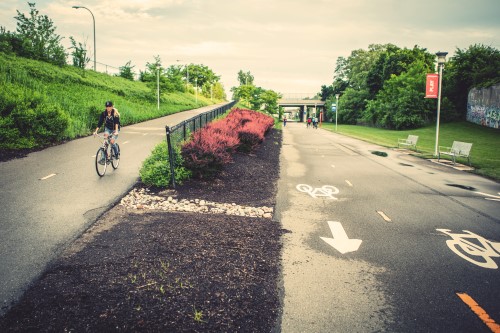
This 2-mile pathway is helping to lead Detroit’s (active) transportation reawakening. Built in a rail trench “cut” 25 feet below street level in the 1920s, the trail took form in the late 2000s when the disused line was in serious neglect. “The Cut” runs through the busiest part of the city and provides valuable commuter connections to the riverfront (a stone’s throw away from the Detroit Riverwalk), Eastern Market and Midtown. Its 20-foot-wide paved pathway includes separate lanes for bike and pedestrian traffic and—preserving the spirit of the area—proudly displays colorful urban art and graffiti murals—many of which have graced the corridor (unofficially) for years. The trail is a matter of great pride for Detroiters and has helped to ramp up development interest along the route.
8. Revitalizing a City – Atlanta BeltLine (Georgia)
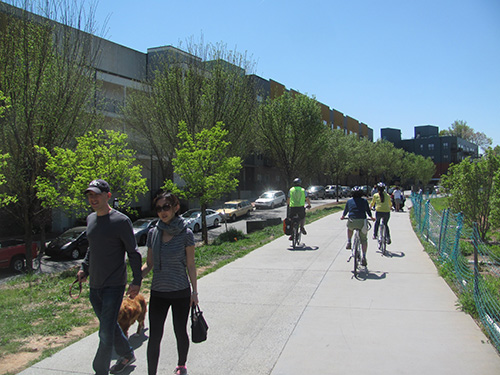
9. Bike Transportation Utopia – Midtown Greenway (Minnesota)
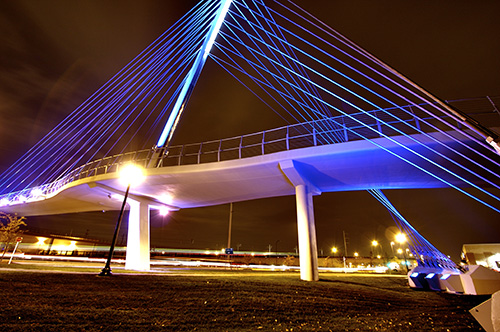
This 5.5-mile trail in Minneapolis—which is nestled 20 feet below street level, incorporates eastbound and westbound biking lanes and includes a separate walking path—has become a commuter’s paradise since it opened in 2000. Built on a disused rail corridor that was little more than a dumping ground by the 1990s, the trail, once complete, sparked a wave of real estate investment and is now an anchor of Minneapolis’ active-transportation community—no small fete for a city boasting a bicycle commuter rate nearly seven times the national average. The trail has helped forge the way for Minneapolis to become one of the world’s top biking cities—a formal designation the city received in 2015.
10. All Around – Washington & Old Dominion Railroad Regional Park (W&OD) (Virginia)
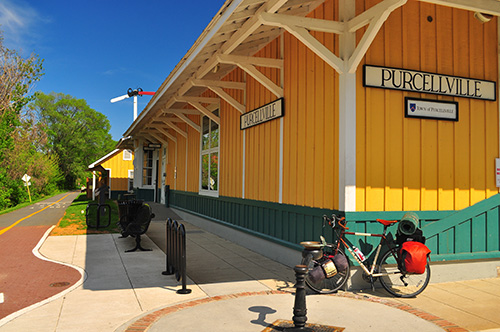
Developed in the 1980s, the 45-mile W&OD Trail is a marvel of convenience and conveyance in the Washington, D.C. suburbs. It’s dozens of parking and access points, proximity to public transportation, half-mile markers, interpretive signs and well-maintained corridor make it one of the most popular trails in the region for commuting, recreation and physical activity. That’s pretty cool when you consider that D.C. is frequently named one of the healthiest or fittest cities in the U.S. Additionally, the many communities the trail connects offer plenty of businesses, restaurants, watering holes, services and local color. The trail’s positive economic, recreational, cultural and transportation impacts make it an all-around exemplary rail-trail.
Acknowledgments: Laura Stark, Tom Sexton, Kelly Pack, Eric Oberg, Laura Cohen and Barry Bergman

Donate
Everyone deserves access to safe ways to walk, bike, and be active outdoors.


